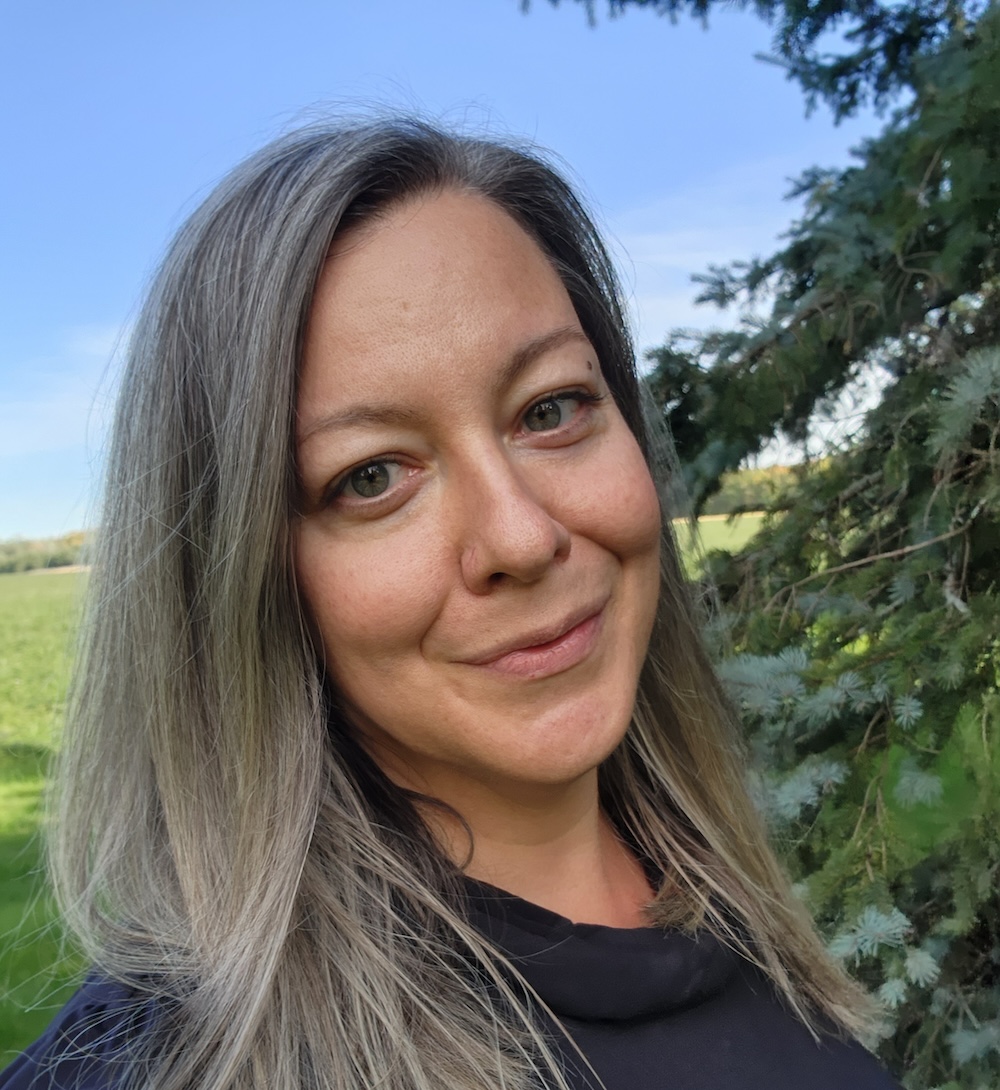Summary
Use the following 8 steps to clean your garden vegetables so they’re safe to eat:
- Gather supplies
- Container for collecting and washing (ideally one with holes)
- Hand pruners
- Hose
- Water
- Garden fork or shovel
- Bucket
- Sink
- Cleaning agent, such as white vinegar, apple cider vinegar, or food-grade hydrogen peroxide, if you choose to use one
- Follow safety procedures
- Carefully inspect your vegetables
- Thoroughly wash them per the steps below
- Wash your hands and clean surfaces your food will touch
- Use clean water
- Collect your vegetables
- Rinse any soil off outside
- Either spray them with a hose or wash them in a bucket (replacing water as it gets too muddy)
- Remove unwanted parts, such as stems, pods, peels, and more
- Wash your vegetables in the sink, then mix 1 part cleaning agent with 3 parts water, and soak the vegetables for 2 to 3 minutes
- Rinse them one last time to remove the cleaner
- Dry them
After, eat or prepare them as you like!
I don’t know anyone who is immune to snacking while in their garden.
I’m certainly not!
Grabbing the perfect cherry tomato or snapping a bean or a pod of peas off the plant and popping it in your mouth right there is part of the joy of gardening, no (there are many, in fact)?
If you’re like me, you pick the best vegetables for your garden, work hard to build your soil organically, stay mindful of the water you use, and avoid using synthetic fertilizers or pesticides.
But does this mean you can get away with not cleaning your garden vegetables? Specifically, does this mean you can get away with not washing them?
I wish it did.
However, while your homegrown vegetables may not have the same washing needs as what you purchase at the grocery store, you can’t know what microbes are on them.
I encourage you to get into the habit of cleaning your homegrown food before you eat it.
Every once in a while, when I am tempted to skip the washing, I think of a particular June day when I was in middle school. About halfway through eating the lovely sandwich one of my parents made for me, I noticed a small slug crawl out from one of the curls in the lettuce that would have been taken from my family garden that morning.
I am sure I would have been fine if I had unknowingly eaten that slug (although I still recommend against eating slugs), but it made an imprint.
In short, I wash my food before eating it.
Here’s how to do that the right way.
1 – Gather Needed Supplies
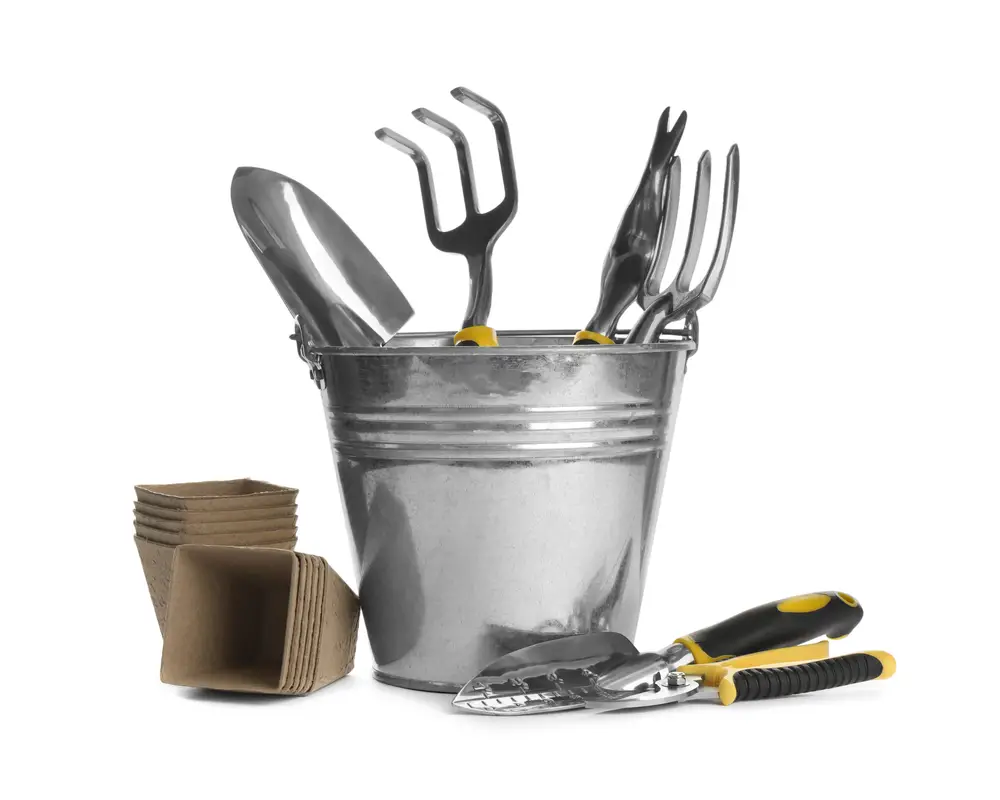
The good news is you’ll only need a few supplies to clean your garden vegetables:
- A container to hold the produce you intend to gather
- Hand pruners
- Hose
- Water
- Garden fork or shovel
- Bucket
- Sink
- Cleaning agent, such as white vinegar, apple cider vinegar, or food-grade hydrogen peroxide, if you choose to use one (see Step 6 for more information about this)
Note: I suggest the above container (or something similar). I’ve been using mine for years. They need holes so you can both collect and rinse your vegetables. Harvest baskets, colanders, strainers, salad spinner liners, any of these are great.
2 – Follow Proper Safety Procedures
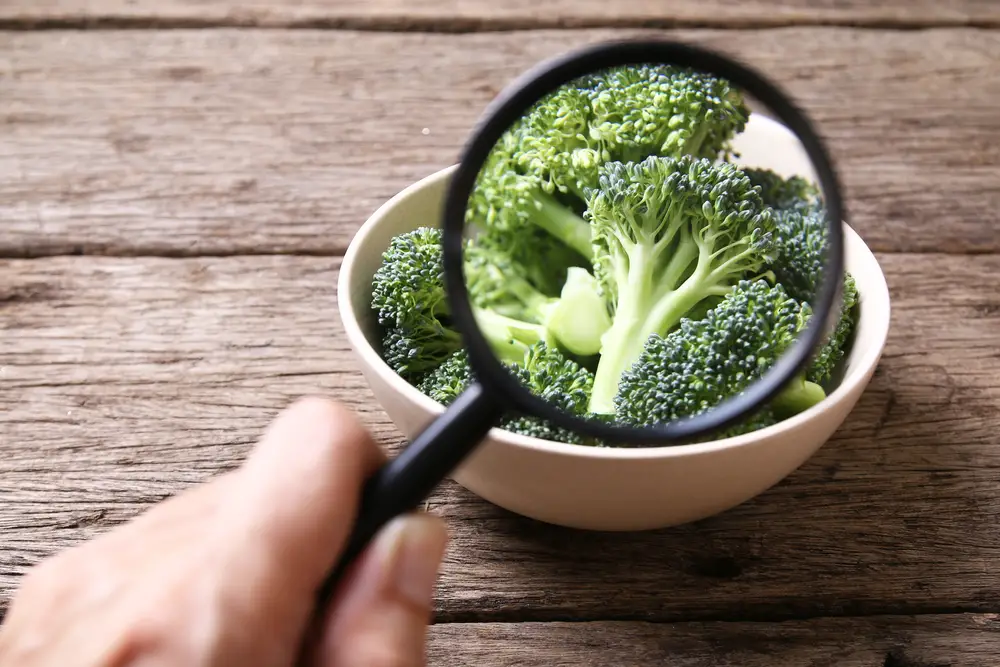
Food poisoning affects millions of people every year. Improper food handling is the cause in many cases.
Following safe food handling practices prevents you from potentially getting sick from consuming the food you are preparing.
Though you have much more control over what your homegrown food is exposed to, you still need to clean it before you eat it.
Healthy soil brims with microbial activity: bacteria, fungi, nematodes, etc. Untreated water can harbor other microorganisms that can make you sick if you ingest them. Your garden veggies may also be home to the occasional insects and animals passing through.
Giving your garden vegetables a good clean and careful inspection helps remove any of the above that you shouldn’t be consuming.
It is also important to wash your hands and clean the surfaces your food will be in contact with before handling food.
3 – Collect Your Vegetables
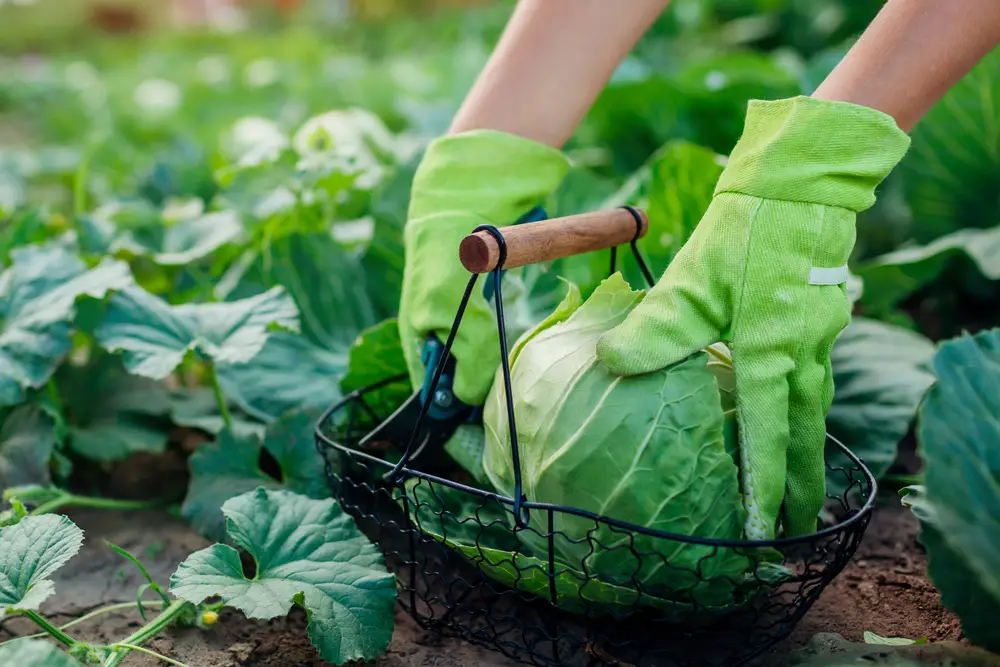
Use a garden fork or shovel to loosen the soil around root vegetables such as carrots, beets, or radishes.
Pull the handle back and lift them out of the soil. Once done, you can gather them by their tops. Brush the soil off and put them in your collection container.
Pinch off or snip (with hand pruners) the outer leaves of leafy green plants. Gently remove cucumbers, beans, peas, tomatoes, peppers, etc., from their plants and place them into your collection container.
Harvest only what you need at the time.
As a side note, I recommend harvesting food for only two reasons.
One reason is that you’re going to use the food right away.
The second reason is that it’s ripe, and not harvesting them puts them at risk of spoiling.
4 – Rinse Off The Soil Outside
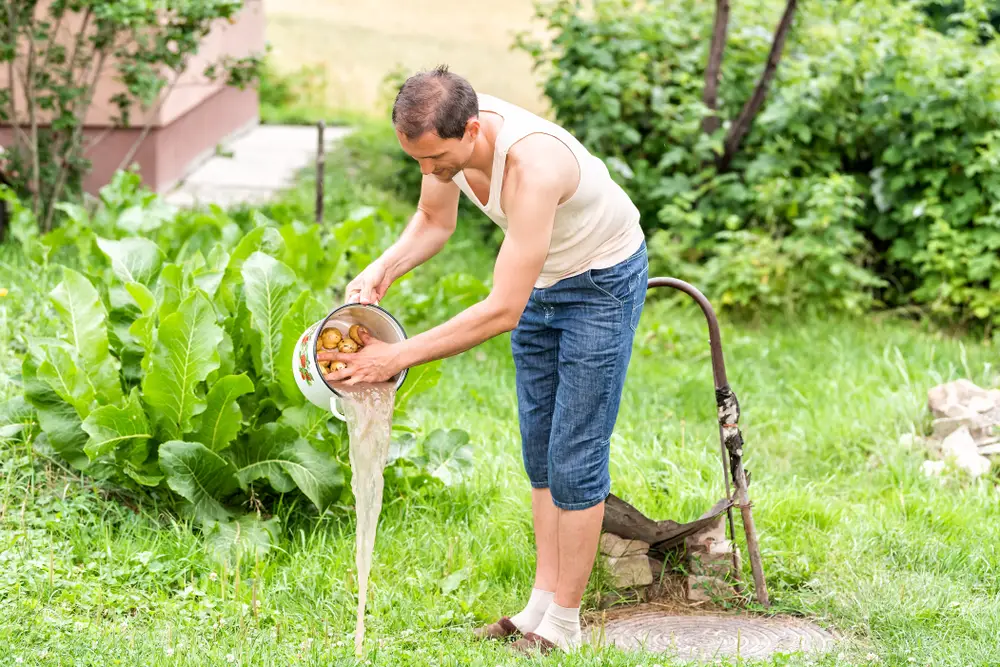
You’ll do the bulk of your cleaning in your kitchen. There is, however, a good reason to clean off your garden vegetables outside: it’ll save you from making as much of a mess inside.
I do this in one of two ways.
The first way is when I’m gathering vegetables for a single meal. I collect them together, then spray off the dirt.
The second way is when I’m processing a larger amount. In that case, I fill a few buckets with water and wash my vegetables in them. I empty and refill the water when it becomes too muddy to use anymore.
5 – Remove Unwanted Parts (Stems, Pods, Peels, Etc.)
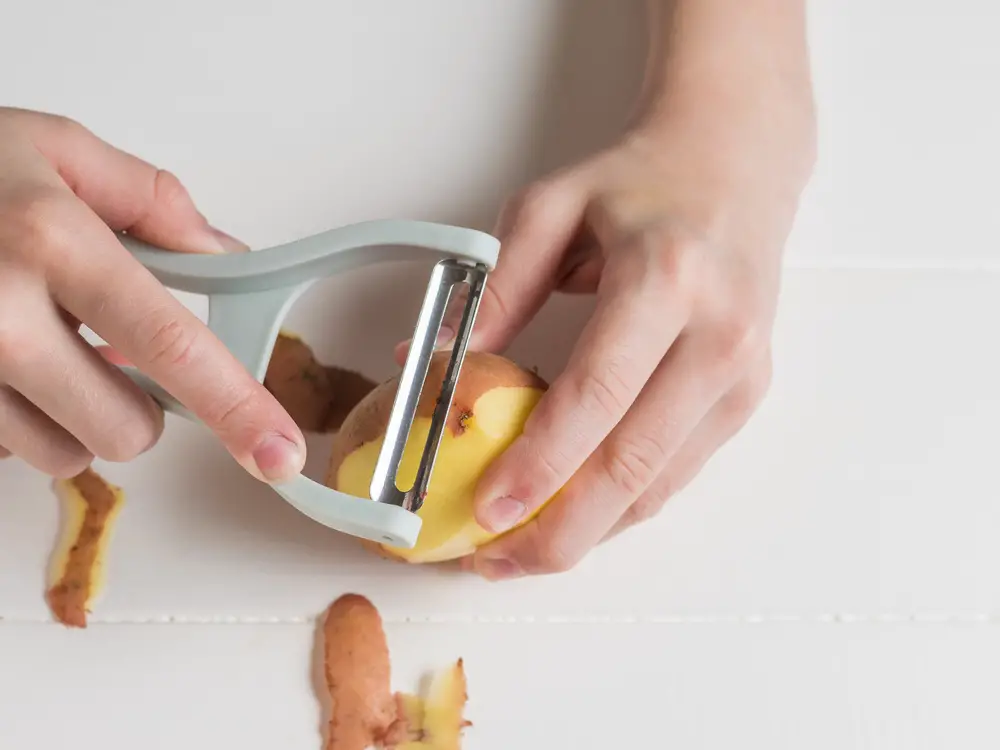
I like to do jobs such as removing tops I’m not going to eat or shelling peas or beans outside as well. I like doing those jobs that way because I’m not as concerned with making a mess, and I can quickly put everything I’m discarding right into my compost.
Alternatively, I will leave my vegetables intact unless I’m going to use them right away.
However, do what works best for you.
Either way, bring your vegetables inside once you’ve rinsed off the soil and tended to other outside tasks.
6 – Wash And Soak Your Vegetables Inside

First, wash your hands with soap. Feel free to wear rubber gloves if that is how you are most comfortable.
Wash your vegetables in your sink until they look visibly clean. Rub any remaining soil off with your fingers if you need to.
I like to clean and eat garden vegetables with edible skins, such as potatoes, cucumbers, eggplants, and zucchini. I do this rather than peel them before eating because their peels are more nutrient-dense.
As a side note, I’m fully aware cucumbers, eggplants, and zucchini are technically fruits. However, many treat them like vegetables, so they’re worth mentioning here.
Once your vegetables are visibly clean, fill your sink with cool water and white vinegar.
The official recommendation is 1 part vinegar to 3 parts water. However, I must admit I don’t often use as much as that.
Additionally, I am most vigilant about cleaning vegetables that my family or I consume raw.
Cooking is another process that eliminates potentially harmful pathogens.
Either way, gently place your produce in the vinegar solution and let it soak for about 2 to 3 minutes. This is enough time to eliminate microbial concerns and draw out insects you may not have seen.
If you don’t have white vinegar, no problem. Other options include apple cider vinegar (ACV) and food-grade hydrogen peroxide. The 1:3 ratio you used with white vinegar will work for ACV and food-grade hydrogen peroxide.
The Centres for Disease Control and Prevention recommends against using soap for cleaning your vegetables. They can leave residue on your produce that may upset your digestive system.
7 – Rinse Them Again
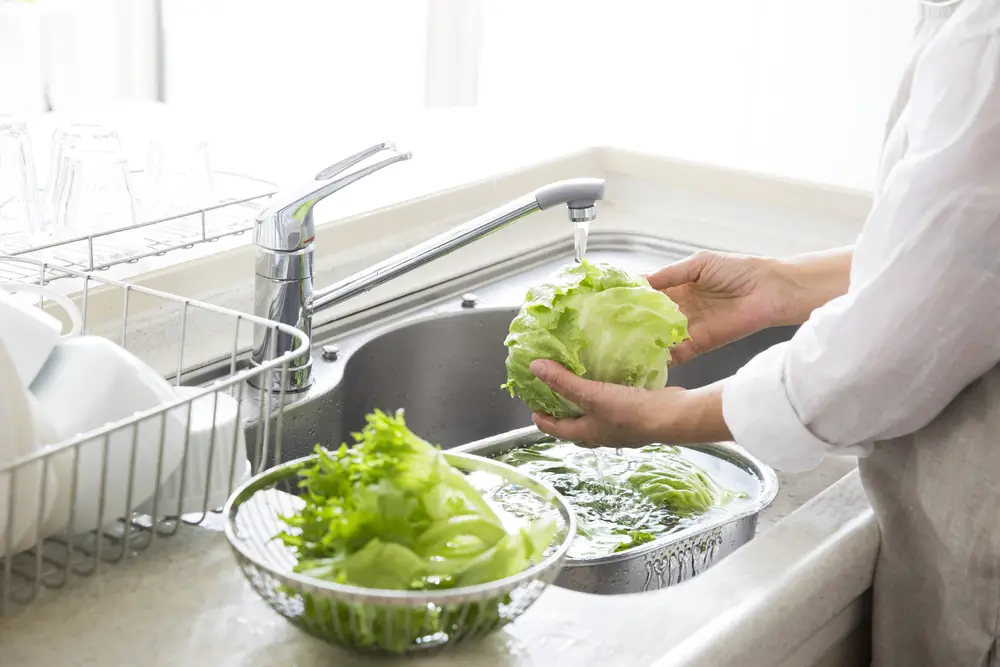
Rinse your vegetables a second time after soaking them.
Remove each one and either immerse it in another sink of plain water or run a bit of clean water over top. This removes any residue left behind by the cleaner.
8 – Dry Them
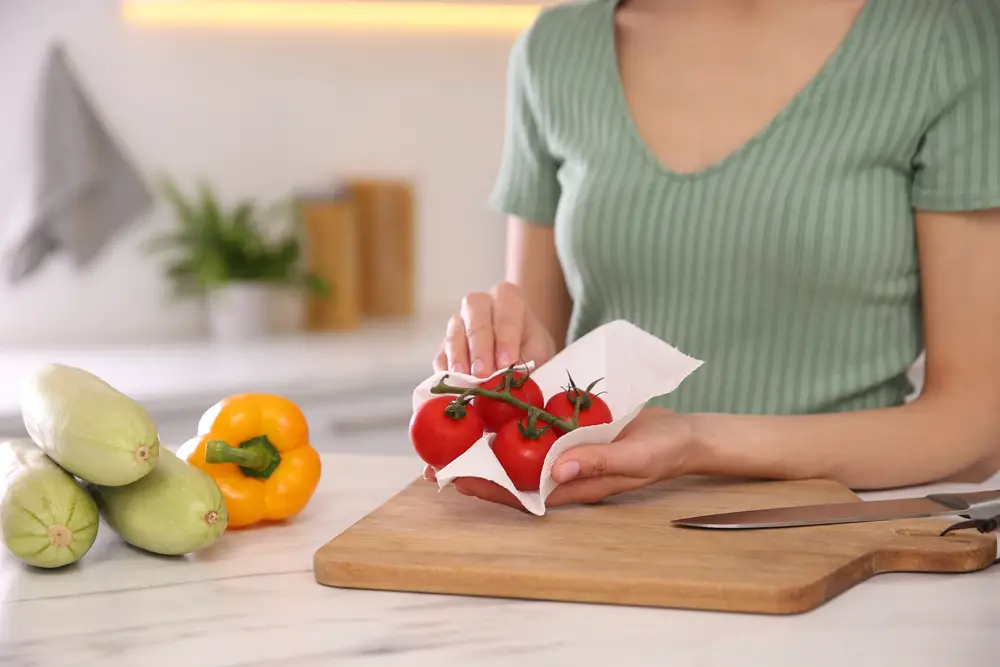
This step applies mostly to produce I will consume raw or need to store before eating.
I will put leafy greens into my salad spinner to remove excess water. For most other things, I will simply dry them with tea towels or lay them out in a single layer to allow them to air dry.
Once dry, you can eat or prepare them as you wish!
